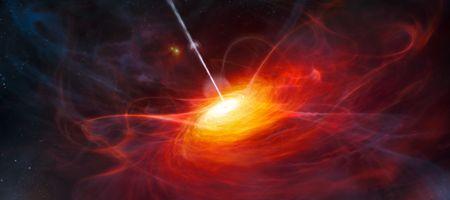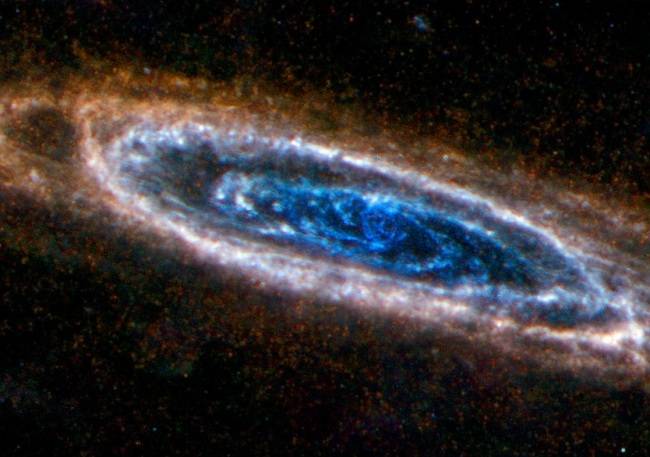Neutronium fusion generated the Big Bang.
Numerous
ideas have been advanced relevant to what scientists refer to as the
Big Bang. The basic premise is all matter in the universe was
compressed. This compressed matter exploded and the universe, galaxies,
stars, and solar systems were created, or evolved. Theorists have sought
to explain the mechanism behind the Big Bang for decades.
For the purpose of advancing an explanation of the Big Bang, we will make a starting stipulation that the universe once consisted of a sea of particles. These exceedingly small particles came in two varieties, positive and negative. And the particles combined into strings, hence there is validity to the notion of string theories, according to this portrayal of the beginning of our Universe. And these particles came together, as positive and negative attract. They came together in a finite number of ways, in that duplication of these primary underlying strings of matter must occur, mathematically speaking. In other words, these particles can only come together in 11 unique ways before the combinations can be formed out of already existing strings as the product of two non-prime numbers. Counting the initial state, when a positive or negative is independent, there are 12 strings. These correspond with the world as we sense it: 12 notes in an octave; 12 colors; and so forth.
The strings combine. The pattern repeats. Eventually, positrons and electrons form. They evolve into quarks, which come together to form protons and neutrons. So we have a sea of matter dominated by protons and neutrons, which seek to combine.
At some point, this sea of matter generated a neutron mass. When neutrons combine a tremendous amount of energy is generated. The mass spins. The core is negative, attracting protons, the shell is positive, attracting electrons. The mass swirls, developing into a low pressure center. Because neutrons are of greater density than protons, they dominate the migration toward the center, low pressure, mass. As these neutrons combine with the center neutron mass, the spin continues to increase, the power of the neutron generated storm grows. Suddenly, when the pressure is sufficient, the neutrons enter into fusion. The fusion process strengthens the power of the system and the growth of this mass is exponential.
This neutron mass evolves into a short lived star and then into a black hole. The core process becomes blanked by a shell of proton dominate mass. The massive neutron fusion process continues inside. Energy, which must be released, is emitted in explosive pulses. But eventually, the shell of drawn matter blocks the energy release so completely that these pulsar style ejections no longer occur.
The neutron, rather neutronium, fusion continues in the core until a critical point is reached. The energy in need of release grows stronger than the shell. The black hole explodes, and the result is our Universe, our reality.
For the purpose of advancing an explanation of the Big Bang, we will make a starting stipulation that the universe once consisted of a sea of particles. These exceedingly small particles came in two varieties, positive and negative. And the particles combined into strings, hence there is validity to the notion of string theories, according to this portrayal of the beginning of our Universe. And these particles came together, as positive and negative attract. They came together in a finite number of ways, in that duplication of these primary underlying strings of matter must occur, mathematically speaking. In other words, these particles can only come together in 11 unique ways before the combinations can be formed out of already existing strings as the product of two non-prime numbers. Counting the initial state, when a positive or negative is independent, there are 12 strings. These correspond with the world as we sense it: 12 notes in an octave; 12 colors; and so forth.
The strings combine. The pattern repeats. Eventually, positrons and electrons form. They evolve into quarks, which come together to form protons and neutrons. So we have a sea of matter dominated by protons and neutrons, which seek to combine.
At some point, this sea of matter generated a neutron mass. When neutrons combine a tremendous amount of energy is generated. The mass spins. The core is negative, attracting protons, the shell is positive, attracting electrons. The mass swirls, developing into a low pressure center. Because neutrons are of greater density than protons, they dominate the migration toward the center, low pressure, mass. As these neutrons combine with the center neutron mass, the spin continues to increase, the power of the neutron generated storm grows. Suddenly, when the pressure is sufficient, the neutrons enter into fusion. The fusion process strengthens the power of the system and the growth of this mass is exponential.
This neutron mass evolves into a short lived star and then into a black hole. The core process becomes blanked by a shell of proton dominate mass. The massive neutron fusion process continues inside. Energy, which must be released, is emitted in explosive pulses. But eventually, the shell of drawn matter blocks the energy release so completely that these pulsar style ejections no longer occur.
The neutron, rather neutronium, fusion continues in the core until a critical point is reached. The energy in need of release grows stronger than the shell. The black hole explodes, and the result is our Universe, our reality.

